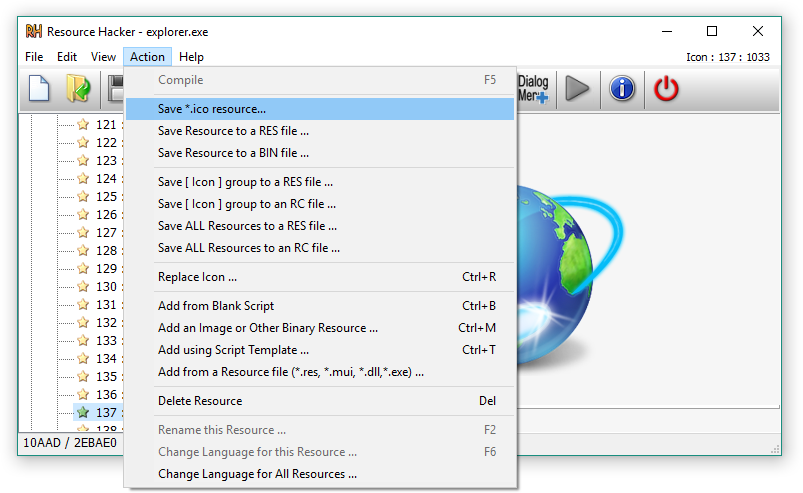
- How to open .dll files to edit how to#
- How to open .dll files to edit .exe#
- How to open .dll files to edit .dll#
- How to open .dll files to edit install#
- How to open .dll files to edit zip file#
(ReflectionTypeLoadException)Ĭould not load file or assembly 'Reflector, Version=5.0.0.0, Culture=neutral, PublicKeyToken=18ca6bb8dd6a03c3' or one of its dependencies. Retrieve the LoaderExceptions property for more information. Unable to load one or more of the requested types. NET Reflector and it was written in C/C++ will it successfully create a C# file?
How to open .dll files to edit .dll#
dll that I want to view the source code was in C or C++ with a slight chance of being C#. To download (to pay) and then it deletes the.
How to open .dll files to edit .exe#
exe if you choose yes it says you must visit the website

cnet, but when you run the reflector.exe a message pops up saying newer version available would you like to download it. I have tried downloading older versions off of. After I click add and locate the plugin I get an error saying that it failed to to load the add-in.ĭoes anyone know if this is because the plugin is not compatible with the beta? Or is it that the plugin does not even work with their newest version, version 7 because when this thread was created I believe they were not using version 7. I downloaded this and then FileGenerator plugin from the link provided. I am not sure if the company wants to buy this if it does not work how we want. I followed everyones advice and went to get. If you are stuck or need some help, comment below and I will try to help as much as possible.I am in the same situation as Neefy was. Nevertheless, having some access is better than no access. This is because the modules and snap-ins related to those settings and features might not be available for Home users. After installing, you can open the group policy editor by executing the gpedit.msc run command.ĭo keep in mind that even though you have access to the Group Policy Editor, some features and options will still be unavailable to you.
How to open .dll files to edit install#
It is that simple to install the group policy editor in Windows 10 home. This action will install the gpedit in Windows 10 and adds all the necessary DLL files that are needed to run the tool. In the File Explorer window, right-click on the “x86.bat” file and select the “Run as administrator” option. Save the file with “Ctrl + S” shortcut and close it.Ĩ. In case you are wondering, all we did was add quotes around %username%.ħ. Once is file is opened in the Notepad, replace all instances of %username%:f with "%username%":f. Right-click on the “x86.bat” file and select “Edit.”Ħ. Open the File Explorer, type “C:\Windows\Temp\gpedit” in the address bar and press Enter.ĥ. Just close the installer by clicking on the “X” icon at the top-right corner.Ĥ. When you are at the end, don’t click on the Finish button. Now, open the downloaded zip file, extract it, and double-click on the “setup.exe” file. You can select both these folders at once by holding down the Ctrl button and clicking on them.ģ. Here, copy the “GroupPolicy” and “GroupPolicyUsers” folders. You can simply copy the path, paste it in the address bar and press Enter to go to the target folder. After downloading the app, open the File Explorer and go to the “C:\Windows\SysWOW64” folder.
How to open .dll files to edit zip file#
So, go ahead and download the zip file from the developer page.Ģ. To enable the group policy editor in Windows 10 home, we have to use a free application called Add GPEDIT. To install and open gpedit in Windows 10 Home follow the steps listed below.ġ. Also, follow the steps below at your own risk. So, before proceeding any further, I recommend you create a system restore point and create a full system backup. Important note: To enable gpedit.msc in Windows 10, we need to use a third-party app that will make changes to the system files.
How to open .dll files to edit how to#
Without further delay, let me show you how to do it. All you have to do is install gpedit in Windows 10 home and configure a few settings and you are good to go. This means that with a simple trick, you can open gpedit in Windows 10 Home.
That being said, Microsoft blocking access to gpedit in Windows 10 Home is an artificial restriction. However, as most of you know, the registry editor is not that user-friendly and if you are not careful, there is a high degree of chance for things to go wrong. In the absence of the gpedit tool, you can use the registry editor to configure most of those settings.


 0 kommentar(er)
0 kommentar(er)
